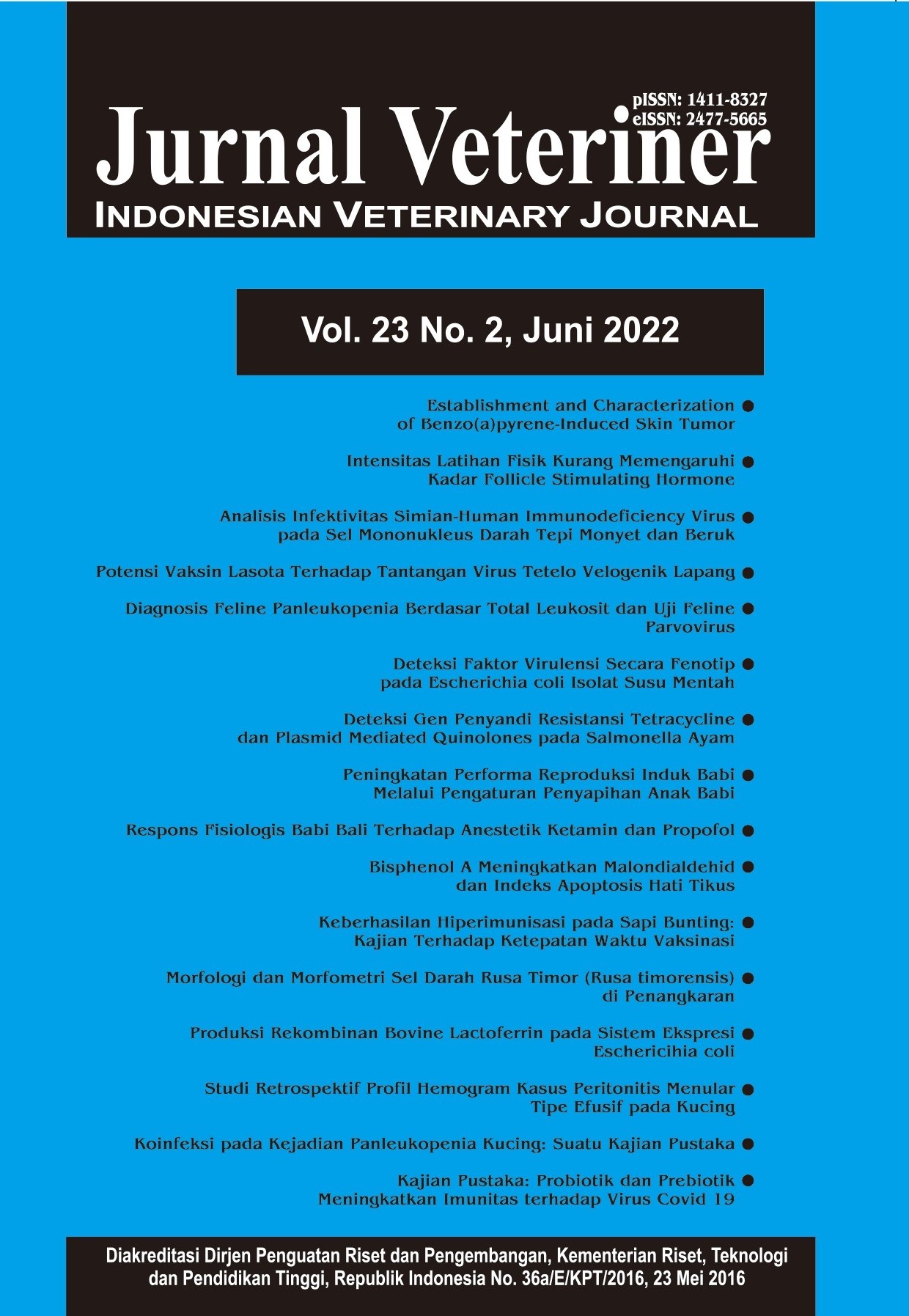Suplementasi Analog Kurkumin Dapat Meningkatkan Kinerja Hati Untuk Mendukung Reproduksi Ikan Nila Merah (Oreochromis niloticus)
Abstract
The quality of fish is largely determined by the deposition of nutrients in developing oocytes and produced by hepatocytes under the control of the hormone estrogen. This study aims to determine the role of curcumin analogue supplementation in improving liver performance to support reproduction of red tilapia (Oreochromis niloticus). The experiment is designed using a completely random design with seven treatments and three repetitions. The treatments given are P0 (curcumin dosage of 0 mg 100 g-1 of pellet), P1 (curcumin analog dosage of 2.4 mg 100 g-1 of pellet), P2 (curcumin analog dosage of 4.8 mg 100 g-1 of pellet), P3 (turmeric powder dosage of 25 mg 100 g-1 of pellet), P4 (turmeric powder dosage of 50 mg 100 g-1 of pellet), P5 (commercially pure curcumin dosage of 2.4 mg 100 g-1 of pellet), P6 (commercially pure curcumin dosage of 4.8 mg 100 g-1 of pellet). The treatment group consisted of five fish. The parameters observed were the content of concentrations plasma vitellogenin, DNA, and RNA liver tissue, concentrations of serum glutamic pyruvic transaminase (SGPT), serum glutamic oxaloacetic transaminase (SGOT), malondialdehyde (MDA), and superoxide dismutase (SOD). The results showed that supplementation of curcumin analogues in the feed could increase the growth of tilapia liver tissue, which was proven by an increase in the concentration of DNA and RNA of liver tissue in the group of fish given the treatment. Improved liver performance through decreased concentrations of MDA, SGPT, and SGOT as well as increased SOD concentrations. Supplementation of curcumin analogues may increase the liver’s capacity to synthesize vitelogenin that will be stored in the developing follicles during gonadal maturity.



















